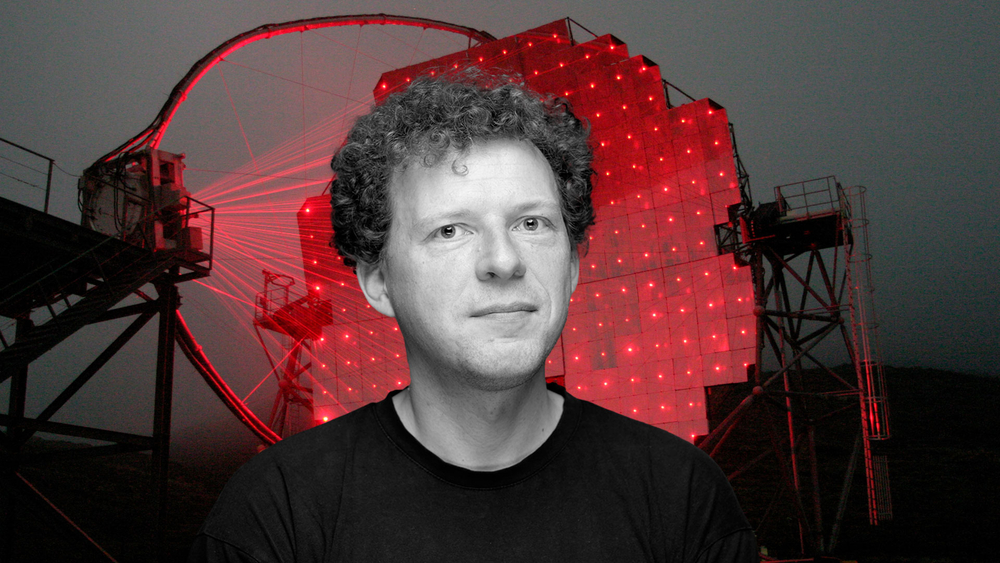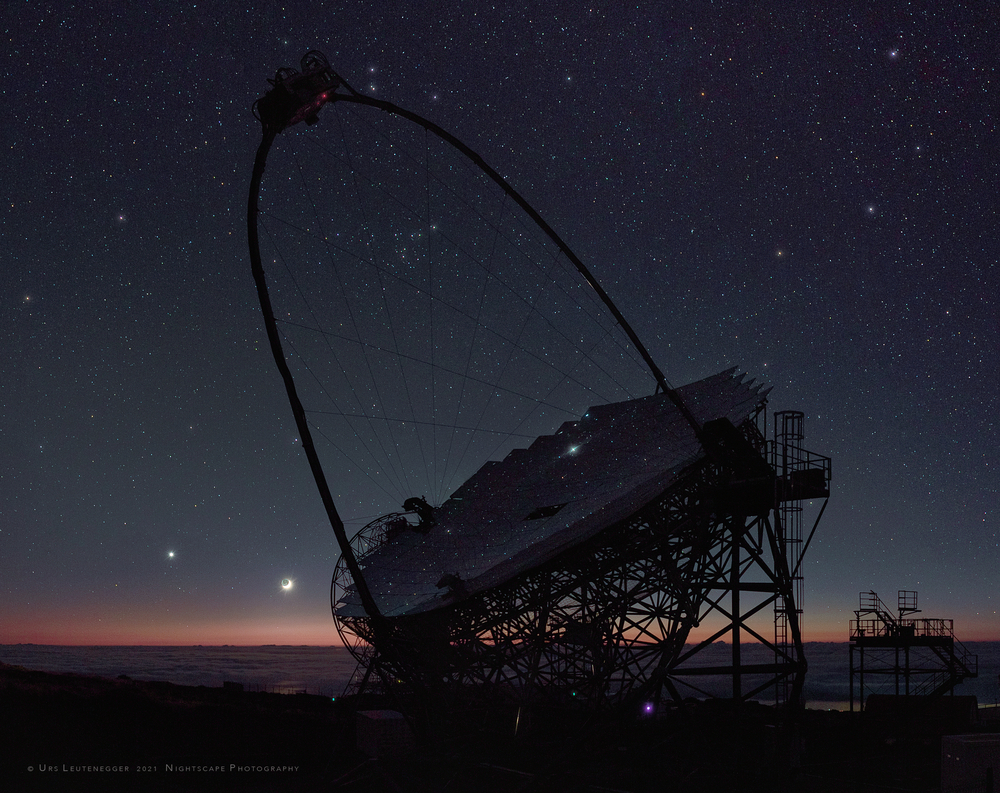
Prof. Julian Sitarek studies cosmic sources by observing very- high-energy gamma rays using the Cherenkov telescopes as part of the MAGIC project. He takes care of the most efficient use of the available telescope time to maximise discoveries in (astro)-physics. At the University of Lodz, he is the Head of the Computer Simulations Laboratory at the Faculty of Physics and Applied Informatics. He is the Chairperson of the Polish group of LST (Large Size Telescope).
What inspired you to become a scientist?
I was fascinated by the possibility of recreating the mechanisms of our world in a computer simulation. I started my career as a scientist with computer modelling of processes which take place in distant galaxies. Currently, I also deal with data analysis methods that allow us to assess how correct our description of the world is.
What impact does your work have on the surrounding reality?
Even though the objects I study are distant and undergo extreme processes, they give us better understanding of the basic laws of physics and the evolution of the universe in which we all live. Observation techniques used in telescopes (e.g. sensitive light detectors and fast data digitisation systems) can then be applied in, e.g. medical imaging.
How do you understand the term: profession of a scientist?
In my opinion, a scientist is someone who is engaged in the search for new methods of discovering the mysteries of the world. Thanks to the acquisition of new knowledge, humanity can develop.
 Photo: Urs Leutenegger
Photo: Urs Leutenegger
A worldwide enterprise
Research and instruments for the research implementation, in which Prof. Julian Sitarek is involved, are very complex and require collaboration and joint expertise of hundreds of scientists and engineers. Below we explain some terms which will enable better understanding of the scale and importance of the carried out projects.
MAGIC (Major Atmospheric Gamma-ray Imaging Cherenkov Telescope) – a ground-based experiment designed to observe gamma rays in the energy range from 50 GeV to 30 TeV. It consists of two telescopes recording Cherenkov radiation with a mirror diameter of 17 metres.
MAGIC is situated at the Roque de los Muchachos Observatory on La Palma, one of the Canary Islands, at about 2200 m above sea level.
The first telescope was built in 2004, whereas its twin brother, MAGIC-II has been operating since 2009. Each of the two telescopes is equipped with a camera consisting of 1,039 pixels, digitised at 1.6 billion frames per second.
CTA (Cherenkov Telescope Array) is the next generation ground-based Cherenkov telescopes, operating in the energy range from a few GeV to over 300 TeV. The currently planned 'alpha' configuration will consist of 64 Imaging Atmospheric Cherenkov Telescopes of three types installed at two sites:
- a site in the Northern hemisphere of La Palma (Canary Islands) that is particularly interested in studying extragalactic objects at the lowest possible energies,
- and the second site in the Southern hemisphere near the Cerro Paranal Observatory in Chile, providing good observation conditions for most of our Galaxy – the Milky Way.
LST, Large-Sized Telescope is used to observe gamma rays of the lowest energies (from 20 to 100 GeV). These produce a small amount of light, which requires a very large mirror for effective recording. Its diameter is 23 metres and a field of view 4.3°. The camera is composed of classical light detectors: photomultipliers. With a total mass of 103 tonnes, the telescope can point in any direction of the sky in just 30 seconds. Four telescopes of this type are planned for the deployment of the CTA's Northern location. Construction of the first LST-1 telescope was completed in October 2018.
The role of Prof. Julian Sitarek
In the case the MAGIC and LST telescopes, the instrument is managed by a Collaboration Board or Steering Committee, which takes strategic decisions and consists of representatives from all the scientific institutes involved in the project.
Prof. Julian Sitarek is a member of the Steering Committee for the new LST telescope and of the Executive Board, which deals with the ongoing use of the MAGIC telescope.
The latter consists of 10 scientists, in particular the spokesperson of the collaboration, the technical coordinator, the software coordinator, the safety and operations coordinator and the physics coordinator (Prof. J. Sitarek). Prof. Sitarek is also a coordinator of the joint data analysis of the LST-1 and MAGIC telescopes.
As physics coordinator, my job is to ensure that the available telescope time and the data collected during such observations are used as efficiently as possible to maximise discoveries in (astro)-physics. I coordinate a group of scientists who in turn coordinate individual working groups dedicated to different classes of physical problems and objects that we can observe.
More information about Prof. Sitarek’s work
Source: Prof. Julian Sitarek (Faculty of Physics and Applied Informatics, University of Lodz)
Edit: Michał Gruda (Communications and PR Centre, University of Lodz)
The mission of the University of Lodz is to conduct reliable research and actively disseminate facts and research results so as to wisely educate future generations, be useful to society and courageously respond to the challenges of the modern world. Scientific excellence is always our best compass. Our values include: courage, curiosity, commitment, cooperation and respect.
